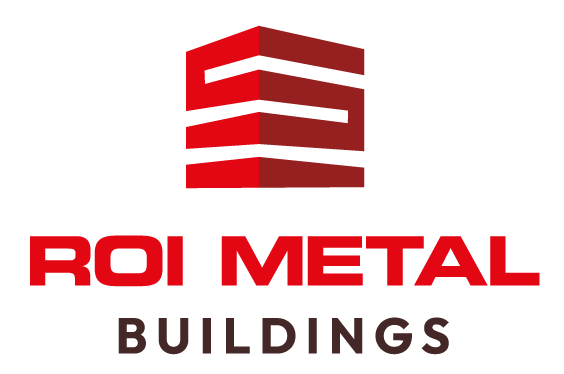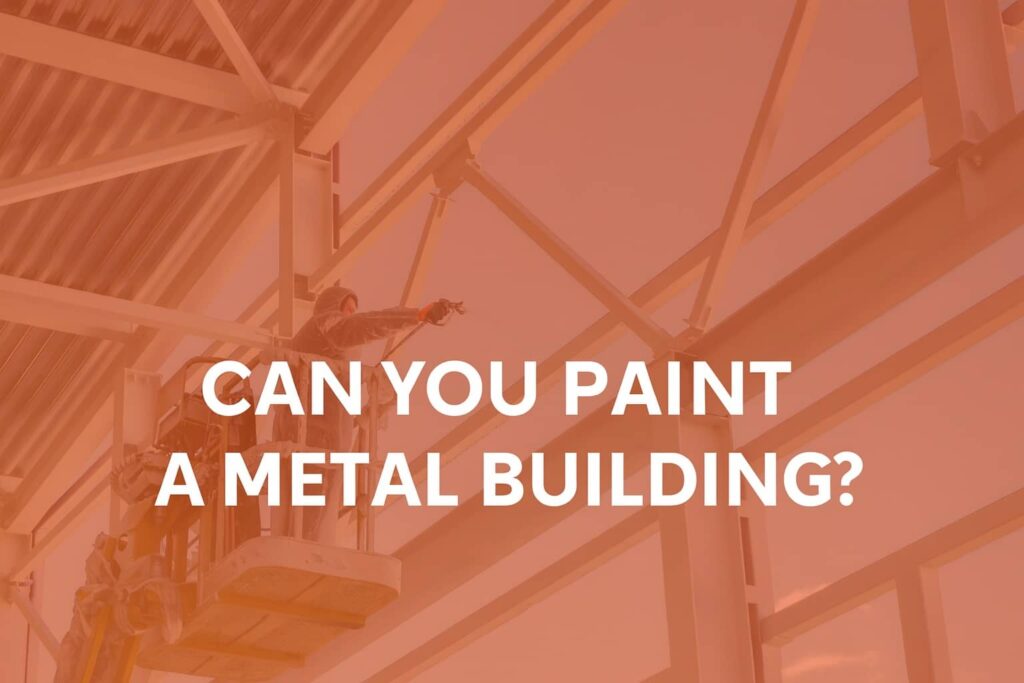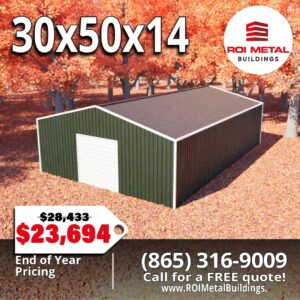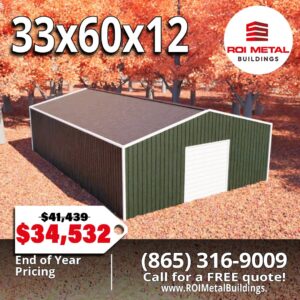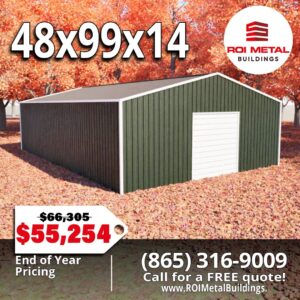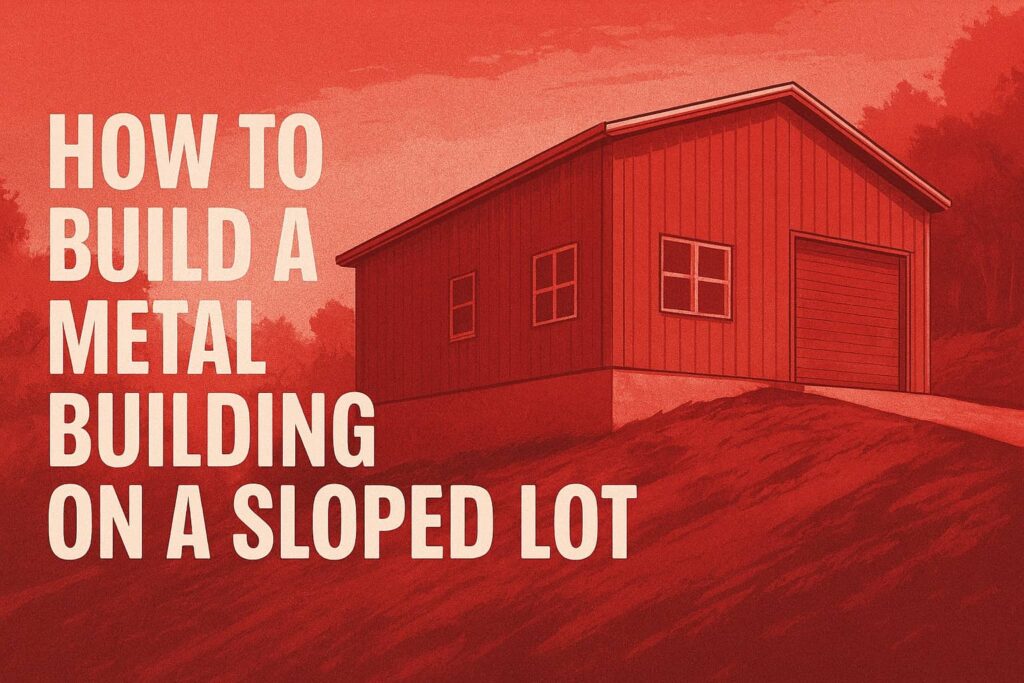Metal buildings have become ubiquitous across commercial, industrial, agricultural, and even residential landscapes, with metal barns and sheds being common examples due to their durability, affordability, and adaptability. However, exposure to the elements eventually takes its toll: weather, ultraviolet (UV) rays, pollutants, and moisture can cause fading, chalking, rust, and corrosion on metal surfaces, and neglected buildings can become covered in dirt, rust, or weeds. For property owners, facility managers, and occupants, the natural next question is: Can you paint a metal building, and is it worth the effort?
The answer is a resounding yes: painting a metal building not only restores its aesthetics and gives it a brand new look, but also offers crucial protection against the factors that compromise structural health and longevity. However, achieving a long-lasting, professional-quality finish on metal isn’t as straightforward as painting wood or drywall. It demands meticulous surface preparation, specialized primers and paints, awareness of environmental and weather conditions, suitable application methods, and ongoing maintenance. This guide outlines proven best practices from industry experts, standards bodies, and experienced contractors to help you make informed decisions about painting your metal building, whether you’re considering a do-it-yourself (DIY) approach or hiring professionals.
- Surface Preparation Is Critical – Cleaning, rust removal, and priming are essential for paint adhesion and long-term durability. Skipping this step leads to peeling and corrosion, especially in Castle Rock’s freeze-thaw cycles.
- Use Paints Designed for Metal and Climate – Acrylic latex and oil-based paints formulated for metal surfaces are recommended.
- Application Technique and Timing Matter – Ideal painting conditions are dry, mild days with low wind. Spray application offers speed and coverage, but a brush or roller may be better for touch-ups or small areas. Regular maintenance extends the building’s lifespan and appearance.
1. Feasibility of Painting a Metal Building
1.1 Why Paint a Metal Building?
Painting a metal building is not only possible but advisable for the following reasons:
- Protection: Paint acts as a barrier against the elements (moisture, UV light, chemicals, and pollutants), preventing rust and corrosion.
- Aesthetics: A fresh coat of paint revitalizes faded and chalky surfaces, allowing for color updates to match branding, architectural style, or personal preference.
- Longevity: Proper painting and maintenance, especially using quality paint formulated for metal surfaces, significantly extend the lifespan of panels and structural components, adding value to the asset.
- Energy Efficiency: Choosing light-reflective paints can reduce internal heat gain and lower cooling costs.
1.2 When Should You Paint?
Repainting is recommended when you observe any of the following:
- Surface rust or corrosion is starting to appear
- Peeling, flaking, or blistered paint
- Faded or stained color due to prolonged sun exposure
- Chalking (when a powdery residue rubs off on touch)
- Scratches or physical damage exposing bare metal
If the panels are structurally compromised (holes, deep pitting, warping), replacement or repair should precede painting.
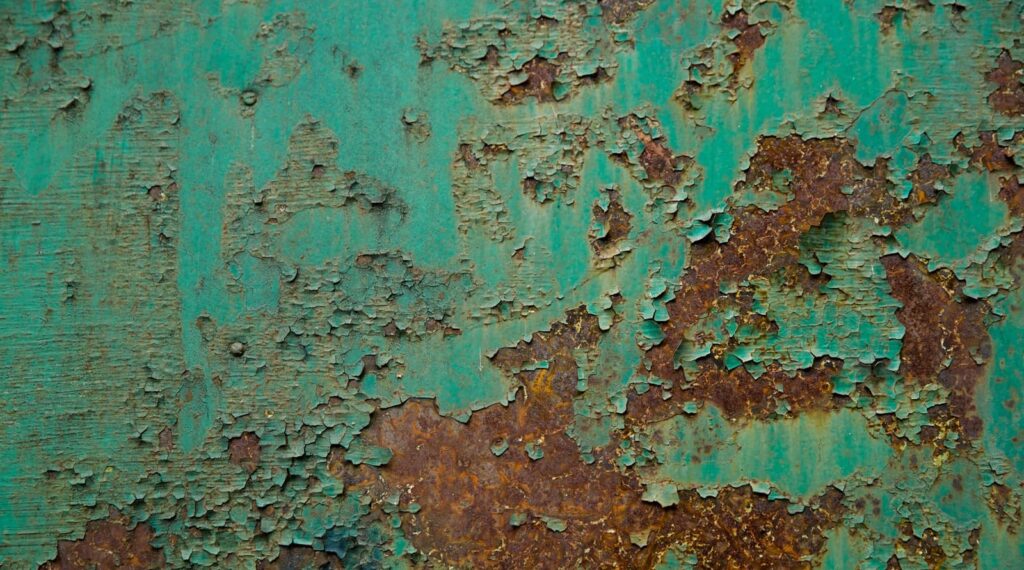
2. Surface Preparation for Painting Metal Buildings
2.1 The Critical Role of Surface Preparation
Surface preparation is the single most important factor determining paint adhesion and durability on metal buildings. Inadequate prep leads to premature failure, even with the best paints.
Key reasons for proper prep:
- Ensures removal of contaminants (dirt, oil, grease, old paint)
- Eliminates loose rust and old coatings that can undermine new paint
- Provides a slightly roughened surface (profile) for paint to grip
- Prevents rust from being sealed underneath new paint layers
2.2 Cleaning and Degreasing
Begin with a thorough cleaning to remove dust, grime, bird droppings, and especially oils or greasy residues:
- Pressure Washing: Use a pressure washer with appropriate detergent for large buildings, ensuring all surfaces are reached—including seams and overlaps.
- Manual Scrubbing: For areas with stubborn stains or greasy spots, use soap/detergent (preferably phosphate-free for environmental reasons) and a stiff brush 5.
- Solvent Degreasing: For persistent oils, wipe down with mineral spirits or acetone, followed by rinsing. Ensure adequate ventilation when using solvents.
Allow the surface to dry completely to prevent flash rusting, especially if power washing or rinsing.
2.3 Rust Removal and Corrosion Control
Rust is the nemesis of painted metal; it must be treated or removed, or the new coating will fail rapidly.
- Mechanical Removal: Use wire brushes, power sanders, or angle grinder attachments to remove loose rust. For larger buildings, consider commercial sandblasting or blast cleaning to achieve required industry-standard profiles (SP-6 commercial, SP-10 near-white, etc.).
- Chemical Rust Removers: Apply rust-dissolving solutions or gels (phosphoric acid-based), following manufacturer instructions. Rinse thoroughly after use and ensure the area is dry before priming.
- Rust Converters: For spots where rust can’t be fully removed, rust converters (tannic acid or phosphoric acid-based) chemically change rust into a stable, paintable surface. These are most effective for spot treatments, not for entire buildings, and are best topped with compatible primers.
After rust removal, paint as soon as possible to prevent “flash rust” from returning.
2.4 Sanding and Surface Profiling
- After rust and loose/flaking paint are removed, sand with coarse-to-medium grit (80-220) to dull shiny surfaces and create tooth for primer/paint adhesion.
- For glossy, previously painted metal, a light sanding is often sufficient 5.
- Remove all dust with a tack cloth or clean, lint-free rags.
2.5 Repairs Before Painting
- Patch any dents or holes using exterior-grade body filler or appropriate patching compounds 5.
- Replace rusted fasteners; use ones designed for exterior use.
2.6 Industry Standards for Surface Preparation
3. Primers for Metal Surfaces
3.1 Why Priming Is Essential
Primers act as the critical bonding layer between bare or prepped metal and the paint topcoat, providing:
- Enhanced paint adhesion
- Additional protection against corrosion
- Uniform surface for color/topcoat application
Skipping primer is a major cause of paint failure unless using qualified direct-to-metal (DTM) paint systems explicitly approved for unprimed use.
3.2 Types of Primers for Metal
Primer Type | Primary Uses & Attributes |
|---|---|
Epoxy Primer | Superior adhesion, chemical and corrosion resistance; ideal for steel, aluminum, and harsh environments. Two-part formulation; often used as industrial base. |
Etch Primer | Contains acids that etch and bond to bare non-ferrous metals like aluminum and galvanized steel. Creates a “tooth” for subsequent layers. |
Zinc-Rich Primer | Especially for ferrous metals/steel. Offers sacrificial protection against rust; often used on heavily-rusted or sandblasted steel. |
Alkyd (Oil-Based) | Good general-purpose primer for metals not exposed to extreme conditions. Affords reasonable adhesion and some corrosion resistance. |
DTM (Direct-to-Metal) | Designed to be applied directly to clean metal without a separate primer; often includes rust inhibitors but may be less robust than a dedicated primer/topcoat system. |
3.3 Application Tips
- Apply an even, thin coat: do not over-apply, as this may lead to sags or slow drying.
- Follow manufacturer specifications for drying/curing times before repainting.
- Prime all areas where bare metal is visible, including seams, screw heads, and patches.
4. Paint Types Suitable for Metal Buildings
4.1 Overview of Paint Types
A. Acrylic (Latex) Paints
- Advantages: Flexibility, UV resistance, fast drying, low VOC, available in many exterior grades.
- Best for: Mild to moderate climates, areas without severe exposure.
- Note: Must be used over a suitable primer for bare metal; some are formulated as DTM systems.
B. Oil-Based (Alkyd) Enamel Paints
- Advantages: Tough, durable, resists chipping, forms a hard shell, strong bond with solvent-based primers.
- Best for: Outdoor, high-wear, or industrial/agricultural buildings; surfaces exposed to moisture.
- Note: May yellow or fade over time; traditional alkyds tend to have higher VOCs.
C. Epoxy Paints
- Advantages: Outstanding chemical and abrasion resistance, superb for moisture-prone or industrial environments.
- Best for: Harsh coastal, marine, or aggressive chemical environments.
- Note: More difficult to apply, usually two-component (requires mixing). Can be used as a base/primer or finish coat.
D. Urethane or Polyurethane Paints
- Advantages: Extreme durability, UV and chemical resistance (when formulated for exterior use), glossy and smooth finish.
- Best for: Industrial, commercial properties requiring extended life.
- Note: Higher cost, may require professional application, some varieties are used as clear topcoats.
E. Powder Coatings
- Advantages: Extremely durable, applied in controlled shop/factory settings, and excellent adhesion.
- Best for: New building components, metal panels, or pre-fabricated parts.
- Note: Not normally a field-applied system for existing buildings, but increasingly popular for new builds or panel replacements.
F. Specialty or DTM (Direct-to-Metal) Paints
- Advantages: Designed for direct application to metal without a separate primer; some include rust inhibitors.
- Best for: Time-limited projects, smaller areas, or previously primed steel in good condition.
- Note: True performance varies – always verify DTM system suitability for your climate and exposure.
5. Weather and Environmental Considerations
5.1 Optimal Painting Conditions
The weather at the time of application is as important as any other factor in determining the success of your paint job.
Ideal conditions:
- Temperature: Between 50°F (10°C) and 85°F (30°C). Some products allow painting up to 100°F as long as the surface is not much hotter than the air (direct sun can overheat metal surfacing). Avoid dropping below 35°F when using water-based/latex paints.
- Humidity: 40–70% is ideal; high humidity prolongs drying and increases the risk of blistering; low humidity may cause paint to dry too quickly.
- Precipitation: Absolutely no rain during application or for 24–48 hours thereafter. Moisture on the surface will prevent proper adhesion.
- Wind: Avoid painting in windy conditions; wind can deposit dirt and debris on wet paint, causing an uneven finish or contamination.
- Sunlight: Avoid painting in direct sun, especially with dark colors. Paint can “skin over,” dry unevenly, or blister if the metal substrate is excessively hot.
5.2 Seasonal Considerations
- Spring or Fall are generally the best seasons for repainting, since temperatures are moderate and humidity is manageable in most regions.
- Do not paint during winter unless temperatures are well within the product’s recommended range; cold interferes with paint curing, can trap condensation, and causes poor film formation.
- Avoid rainy, snowy, or stormy forecasts.
5.3 Environmental and Regulatory Factors
- VOC Regulations: Many regions limit volatile organic compound (VOC) emissions in paint. Prefer low- or zero-VOC products for health and compliance reasons.
- Runoff Management: During prep and rinsing, ensure chemical or rust remover runoff is contained according to local regulations, to prevent waterway contamination.
- Eco-Friendly Choices: Increasingly, eco-safe, non-toxic, and low-odor paints are available for those sensitive to fumes or seeking to minimize their environmental impact.
- Color Impact: Light colors can reduce cooling loads in hot climates; some communities, especially historic districts, may have color restrictions.
6. Cost-Benefit Analysis of Painting vs. Replacement
6.1 Painting vs. Panel Replacement
Aspect | Painting | Replacing Panels |
|---|---|---|
Upfront Cost | Lower ($1.50–$4.00/sq. ft.) | Higher ($10–$30+/sq. ft.) |
Lifespan | 8–15 years, up to 30 for premium | 30–60 years for new metal panels |
Aesthetics | Broad color/update choices | Possible to change color/profile |
Downtime | 2–5 days, can be staged | Weeks if structural |
Disruption | Minimal | Moderate to high |
Environmental | Less waste if prepped | More waste (metal scrap) |
Painting is often more cost-effective and environmentally friendly if the metal is structurally sound and rust is surface-level. Replacement becomes necessary if there’s severe corrosion, holes, or failed fasteners/foundation.
Conclusion
Painting a metal building is not only possible but, when done with expertise and the right materials, can be an economical and ecologically sound way to extend its life and maintain visual appeal. The process is complex but manageable:
- Thorough cleaning and rust removal set the foundation.
- Priming, where appropriate, and the use of metal-specific paints are non-negotiable for durability.
- Application method, seasonal/weather considerations, and adherence to safety and environmental standards round out a successful project.
- Routine inspection and maintenance will prolong the next repainting cycle and help preserve the building’s value.
Whether you tackle a metal building repaint as a DIYer or with professionals, following these best practices ensures protection and pride in your asset for years to come.
For further insights, always consult product technical sheets and local experts, and consider the unique requirements of your metal building’s environment and use case.
